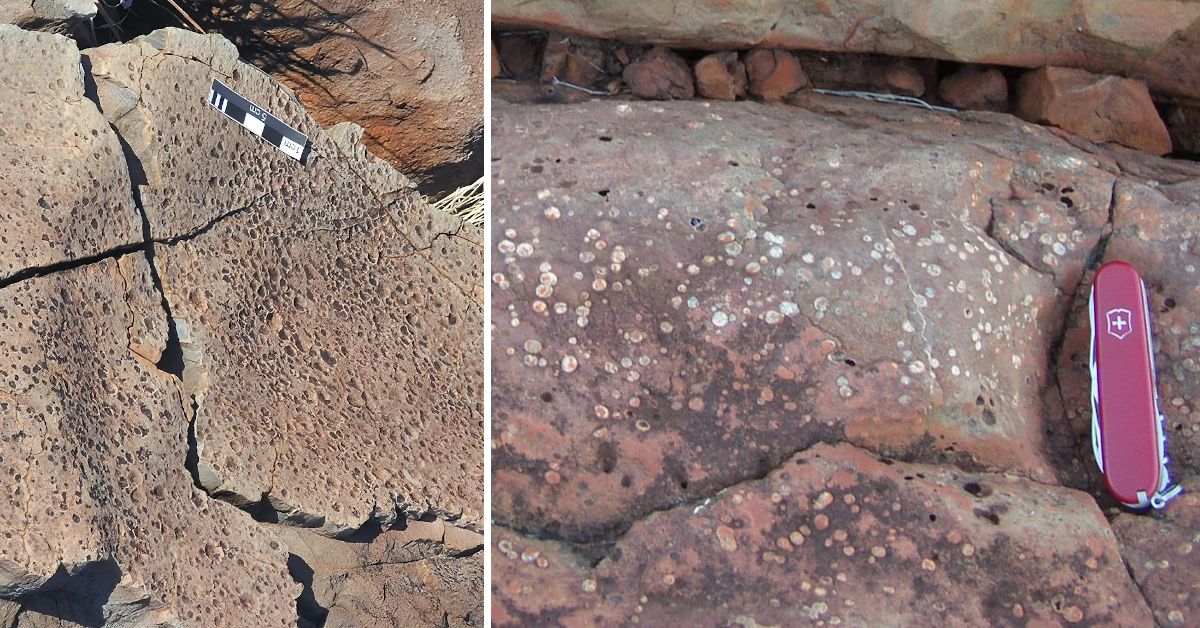A long-standing palaeoclimate paradox finally appears to have been solved.

2.7 billion years ago, during the Neoarchean era, Earth was very different from what it is today.
“No grass, no animals, no trees,” explained astrobiologist Sanjoy Som. “The moon was a lot closer, so the tides were stronger. The planet was spinning faster, and there was no oxygen. For all intents and purposes, it’s essentially an exoplanet.”
Also, back then the sun was roughly 70% less luminous and its energy production was thought to be less than 85% of its current level. This ‘faint young sun’ would not have been able to keep Earth’s surface above the freezing point of water.
“But that was not the case. It was warm enough for liquid water to be present,” added Som, who directs the Blue Marble Space Institute of Science. “There’s plenty of evidence in the rock record for rivers, for beaches, for rain.”

That warmth also meant that the planet could provide a habitat for life. The seas were abounding with microbes, the only living things on the planet, which were transitioning to living on land. Much like modern organisms, these microbes required warmth from the sun to survive.
This inconsistency is known as the faint young sun paradox, and people like Som believe greenhouse gases were the key. They probably kept the planet in a harmonious state by locking in the heat from the weak sun. That said, opinions vary on the composition of the air during that distant period.

Until recently, the prominent theory was that an increase of nitrogen gas (N2) in the atmosphere doubled the air’s thickness, creating a greenhouse gas effect that kept our planet warm. This process is called pressure broadening and would have meant that sitting on a Neoarchean felt like swimming 45 feet underwater, due to the extra air pressure.
But then, in 2012, raindrops began to erode this idea. Som, then a graduate student at the University of Washington, and his colleagues compared the imprints of 2.7-billion-year-old raindrops left in South African volcanic ash with those left by contemporary ones to determine air thickness and pressure in the Neoarchean era (thicker air causes raindrops to descend at a slower rate and thus make smaller indentations on the ground).

Based on the shape of the imprints, the team concluded that air pressure 2.7 billion years ago likely was only half of what it is currently, suggesting that Earth’s climate was much warmer back then as a result of a build-up of greenhouse gases like methane, ethane and/or carbonyl sulphide – instead of a thicker atmosphere.
Although the project yielded a wide margin of error, a year later the findings were backed by a group of European scientists who examined quartz crystals that were buried in the seabed 2.7 billion years ago and contained gas bubbles from hydrothermal vents. By performing chemical analysis, they identified pockets with nitrogen and determined the air pressure. Their calculations corresponded with Som’s cautious estimates, implying a less dense ancient atmosphere.

Meanwhile, Som and his colleagues were experimenting with a method that utilized lava as a barometer, PBS reported. Lava cools quickly from both the top down and the bottom up as it flows, creating pockets within the molten material that get filled with gases. However, the bubbles formed at the bottom of the solidified lava tend to be smaller than those at the top, which is due to air pressure.
The primary factor affecting the size of the uppermost bubbles is the pressure exerted by the weight of the atmosphere on the lava. As you move deeper into the lava flow, the added weight of the molten rock also contributes to the pressure, causing the bubbles to become smaller.
“So if you know the size of the bubble at the top and the bottom, and you know the thickness of the lava, you can calculate air pressure,” Som said.
The researchers obtained samples from Neoarchean lava flows and used X-rays to assess the relative size of the bubbles. The findings surpassed Som’s previous calculations based on raindrops and showed that the ancient Earth’s pressure was low, ranging from 20 to 50 percent of present levels. This suggests that most of Earth’s nitrogen was not present in the atmosphere during that time, but was instead located in either the crust or the mantle.

Som believes that Earth’s atmosphere initially contained a large amount of nitrogen, and the first bacteria utilized the gas for their survival. The oldest known microorganisms, dating back to 3.2 billion years, were probably nitrogen fixers that transformed the gas into ammonia.
As these microbes thrived, they reduced the amount of nitrogen in the atmosphere, leading to its thinning – a process that continued until the Great Oxidation Event 2.4 billion years ago, when cyanobacteria that favored photosynthesis started adding oxygen to the atmosphere, replenishing it.
Som is most excited by the implications the findings could have in the search for habitable planets outside our Solar System.

“By taking snapshots of Earth through time, when things were very different compared to today, it can give you another indication of existing worlds that could host life.” Som said. “The early Earth then becomes a fantastic lab to study habitable planets that are different than modern Earth.”
Sources: 1, 2, 3, 4, 5
